Header photo: The ACMA3 program is creating jobs in production and processing for more than 5,000 women and youth in Benin, including Gwladys Houndote, a pepper farmer and member of the Itchèléré cooperative.
Letter from IFDC’s Leadership
CATALYZING IFDC’S FERTILIZER & SOIL HEALTH EXPERTISE
Last October at the World Food Prize Foundation’s annual International Borlaug Dialogue, the “three C’s” were raised repeatedly as factors affecting global food security: COVID-19, climate change, and conflict. None of these are surprising words for us anymore. Indeed, we may be tempted to wonder why we are still talking about them. But most of these factors are not solved, and even more so for the most vulnerable, including the small-scale farmers IFDC works with. The pandemic, persisting climate change, and ongoing – and increasing – conflict continue to threaten small-scale crop production, base-of-the-pyramid purchasing power, and access to basic needs for survival.
At the time of writing (June 2023), the World Bank’s global food price information shows “high inflation in most low- and middle-income countries, with inflation higher than 5% in 70.6% of low-income countries, 81.4% of lower-middle-income countries, and 84% of upper-middle-income countries, with many experiencing double-digit inflation. In addition, 80.4% of high-income countries are experiencing high food price inflation.” While upper-middle-income and high-income countries are experiencing higher inflation, they also have larger food reserves in contrast to the low-income countries, creating an exacerbating rise in inflation.
Read the Letter
If the past few years have taught us anything, it is that we cannot take for granted the vulnerability and resilience of our food systems. Global food systems’ recovery from the one-two punch of the pandemic and Russia’s ongoing aggression will be a long bout, and we must prepare now, if humanity expects to continue our battle against food insecurity and survive, much less thrive, through any coming and continuing crises. The world cannot afford to wait any longer. We must make our food systems less vulnerable and much more robust, and we must focus on soil health as a critical component of food systems transformation if we are to continue to feed the world’s growing population, preserve biodiversity, and mitigate the effects of climate change.
Several of IFDC’s decision-support dashboards, launched last year during the fertilizer crisis, have solidified their reputation as necessary tools in our post-pandemic world. AfricaFertilizer, an IFDC initiative, rebranded and launched a streamlined website, putting data in the hands of users. The Feed the Future Enhancing Growth through Regional Agricultural Input Systems (EnGRAIS) Project for West Africa and partners launched an updated Fertilizer and Seed Recommendations Map for West Africa (FeSeRWAM) and an agro-input packages (AIPs) web application. The West Africa Fertilizer Cost Simulator app was launched to assist in evaluating the cost of fertilizers from port to farm. And finally, the Africa Fertilizer Watch continues to provide the latest in updates on the flow of fertilizer across the continent. We see fertilizers as one instrument to increase soil health and contribute to food security – they are not an end in themselves.
2022 was a catalyzing year for IFDC, as the organization began to expand and solidify its fundamental expertise in soil health as the foundation for human, animal, and planetary health. Building on the 2020-2030 Strategy, IFDC worked to establish new solutions and innovations in the soil health domain that address the global fertilizer and food security crises. With the increased attention of donors, industries, and governments around the world, IFDC sought to expand and renew the organization’s positioning as the international knowledge center and advisor for soil health solutions from fertilizer.
During the year, IFDC continued planning for an Innovation Center focused on advancing fertilizer and soil science to be housed at its campus, where labs, a pilot plant complex, and researchers will fast-track new solutions for ongoing and emerging issues. The Innovation Center will provide a collaborative, purpose-built space to design and scale next-generation soil health and plant nutrition innovations. Several universities, private sector partners, and government entities have pledged their support for the project.
Preparations with our partners for the African Union Fertilizer and Soil Health Summit are well underway. Several publications and working groups are already producing work to shape a 10-year action plan for sustainable food security growth in Africa.
As the year concluded, we thanked President and CEO Albin Hubscher for his service to IFDC. On December 31, Hubscher officially retired after four years of deftly leading the organization to a renewed commitment to soil health. A steadfast supporter of next-generation soil health and plant nutrition innovations, Hubscher was instrumental in formulating IFDC’s plan to develop an Innovation Center. Throughout his time at IFDC, Hubscher created a legacy dedicated to upgrading and modernizing IFDC’s facilities. During his retirement ceremony, we announced plans to honor his impact by establishing the Albin Hubscher Laboratory at headquarters in 2023.
As we bid farewell to our leader, we are reminded of IFDC’s unwavering dedication to its mission. IFDC is committed to innovating, teaching, and advocating for healthier soils and plants for a food-secure and environmentally sustainable world. While the challenges multiply and change, we believe the solutions continue to remain beneath our feet. Restoring our planet’s soils, until very recently our most overlooked asset, will be the key to solving so many of the challenges facing poverty and food insecurity today. It is our singular goal to care for, maintain, and build the health of the precious ground on which we stand.
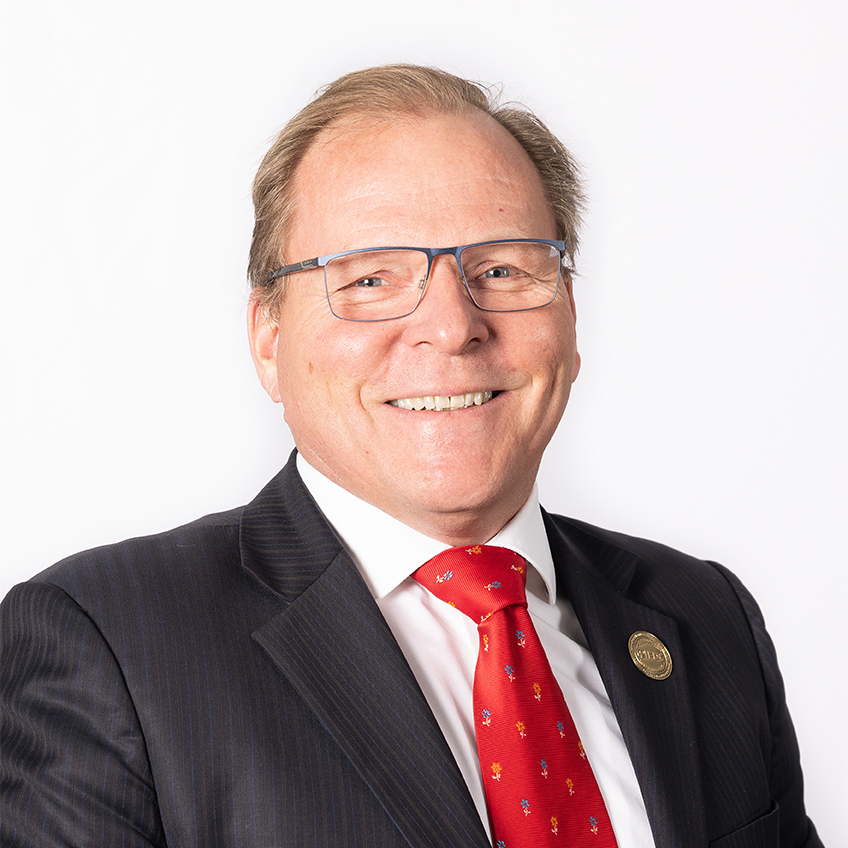

Our Reach
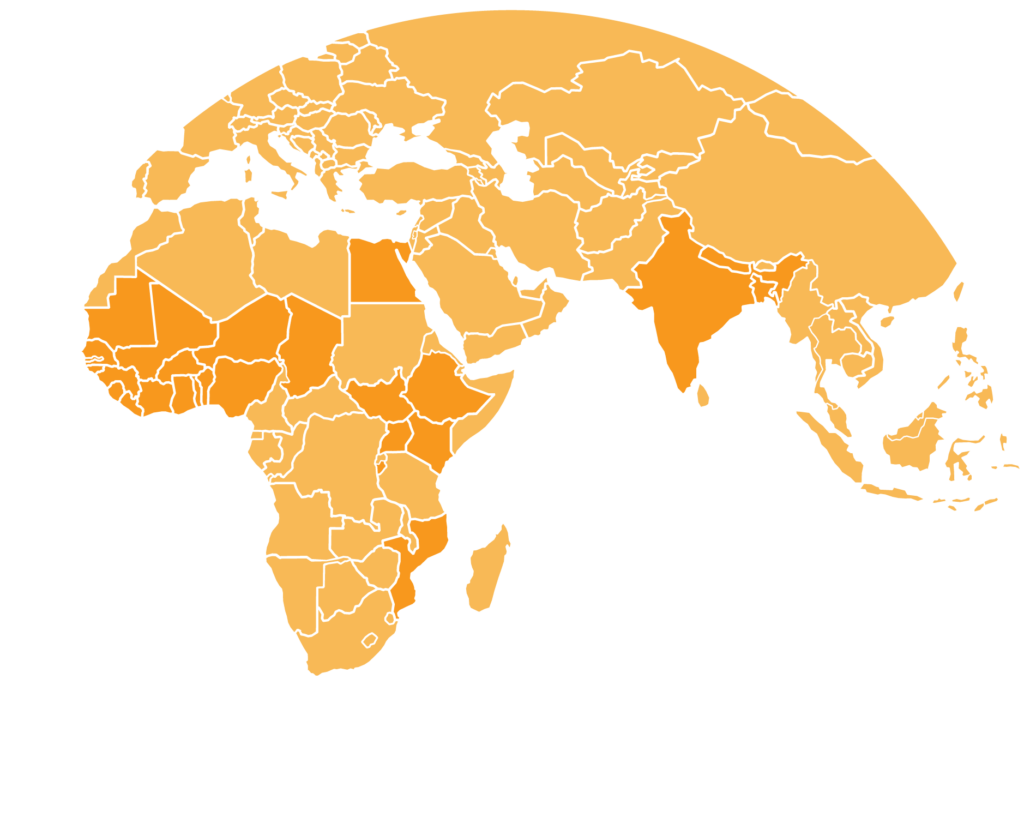
Results Achieved
Measuring Impact 2018-2022
| Indicators | 2018 | 2019 | 2020 | 2021 | 2022 | |||||
|---|---|---|---|---|---|---|---|---|---|---|
| Total | Projects | Total | Projects | Total | Projects | Total | Projects | Total | Projects | |
| Hectares under improved technologies | 406,984 | 11 | 102,661 | 17 | 193,768 | 17 | 419,652 | 13 | 641,595 | 11 |
| Farmer participants who applied technologies | 549,184 | 14 | 213,654 | 17 | 416,522 | 18 | 527,003 | 11 | 945,930 | 11 |
| Farmers trained (% women) | 508,961 (45%) | 16 | 256,685 (31%) | 20 | 267,023 (46%) | 18 | 408,557 (53.4%) | 14 | 258,566 (47%) | 14 (13) |
| Demonstration plots established | 1,207 | 11 | 13,439 | 20 | 14,501 | 20 | 9,383 | 14 | 5,661 | 11 |
| Public-private partnerships formed | 331 | 15 | 523 | 21 | 838 | 24 | 245 | 14 | 331 | 12 |
| Outreach activities | 818 | 16 | 4,207 | 26 | 5,133 | 25 | 4,054 | 15 | 12,349 | 16 |
| Climate-adaptive technologies (hectares)* | 302,482 | 3 | 428,122 | 8 | ||||||
| Private agri-enterprises that have benefited or improved as a result of interventions* | 8,376 | 6 | 7,152 | 7 | ||||||
| New jobs created as a result of agribusiness interventions* | 14,242 | 3 | 22,316 | 2 | ||||||
| *New indicators as of 2021 |
The overall goal of IFDC research is to significantly boost the production of higher quality food using less land and water, improve the climate resilience of farming systems, and reduce the adverse environmental impacts associated with agriculture. Our research activities focus on improving nutrient use efficiency, reducing nutrient losses, and improving soil health through organic and inorganic sources and products to achieve sustained, balanced fertilization that ensures optimal economic returns for resource-constrained smallholder farmers globally.
During 2022, our research team explored soil-recovering integrated soil fertility management (ISFM) the development of innovative products to improve micronutrient delivery, implementation of integrated approaches involving decision support tools and soil maps and analyses to guide and validate research findings, and fertilizer production and process trials.
Phosphate Rock Decision Support System
The Phosphate Rock Decision Support System (PRDSS) is an innovative web-based tool designed to predict the relative agronomic effectiveness and economic effectiveness of phosphate rock in comparison to water-soluble phosphorus fertilizers. Developed through a collaboration between the Food and Agriculture Organization of the United Nations, the International Atomic Energy Agency and IFDC, the PRDSS empowers farmers to assess the agroeconomic viability of using phosphate rock under their specific farming conditions.
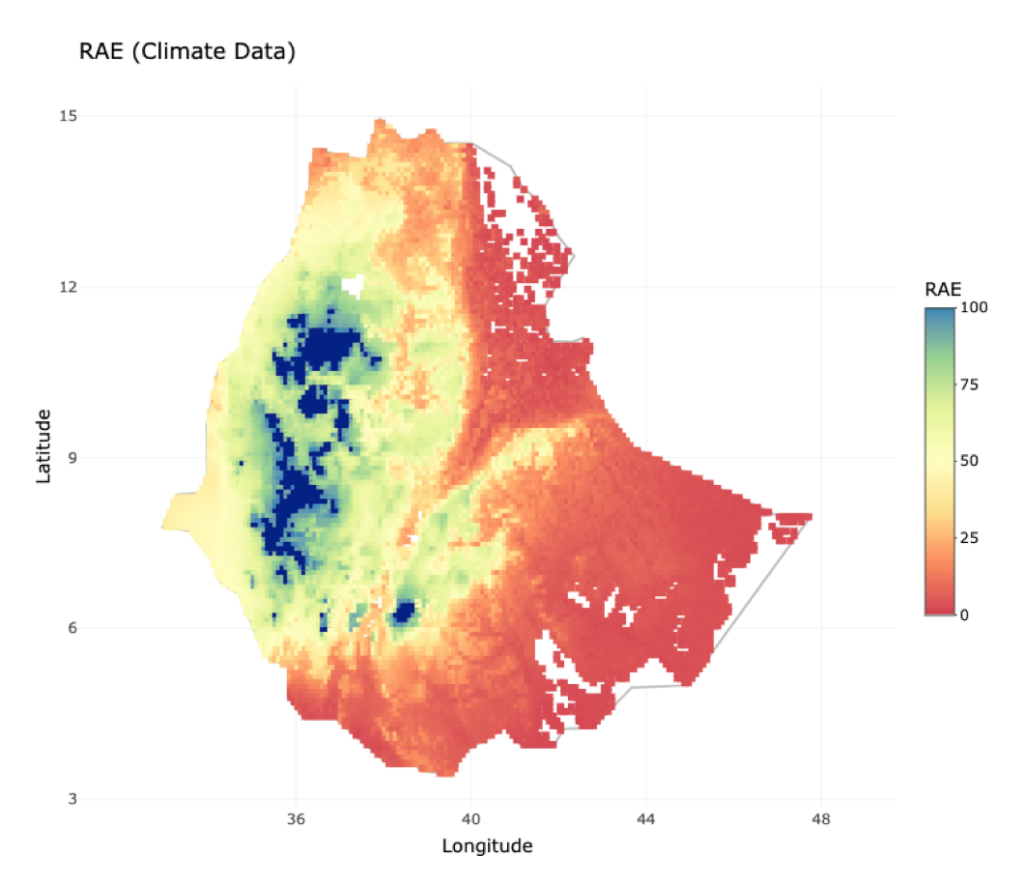
Ethiopia
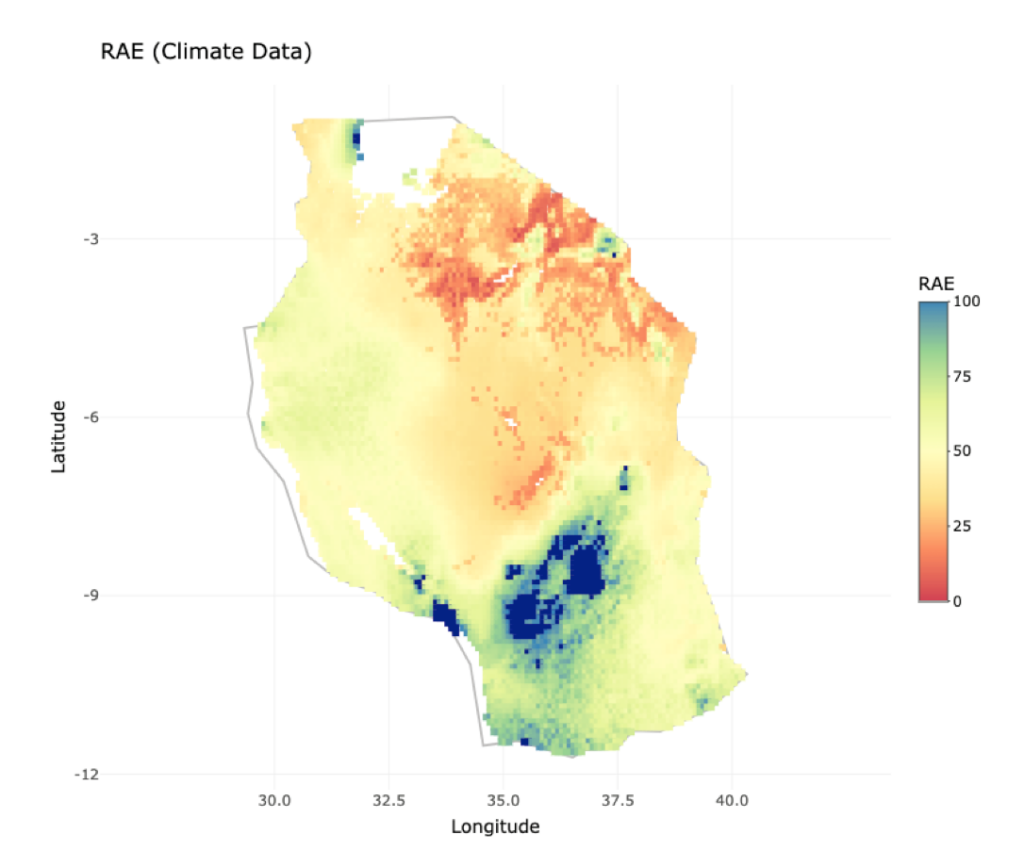
Tanzania
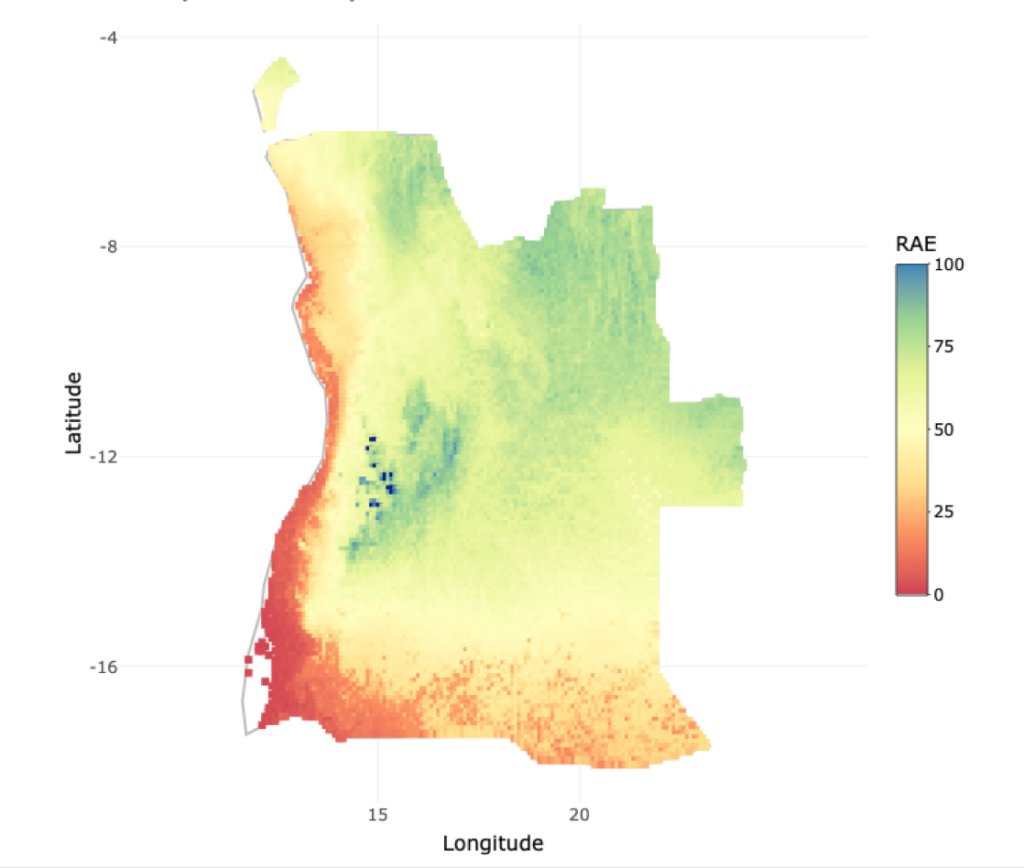
Angola, CABUT
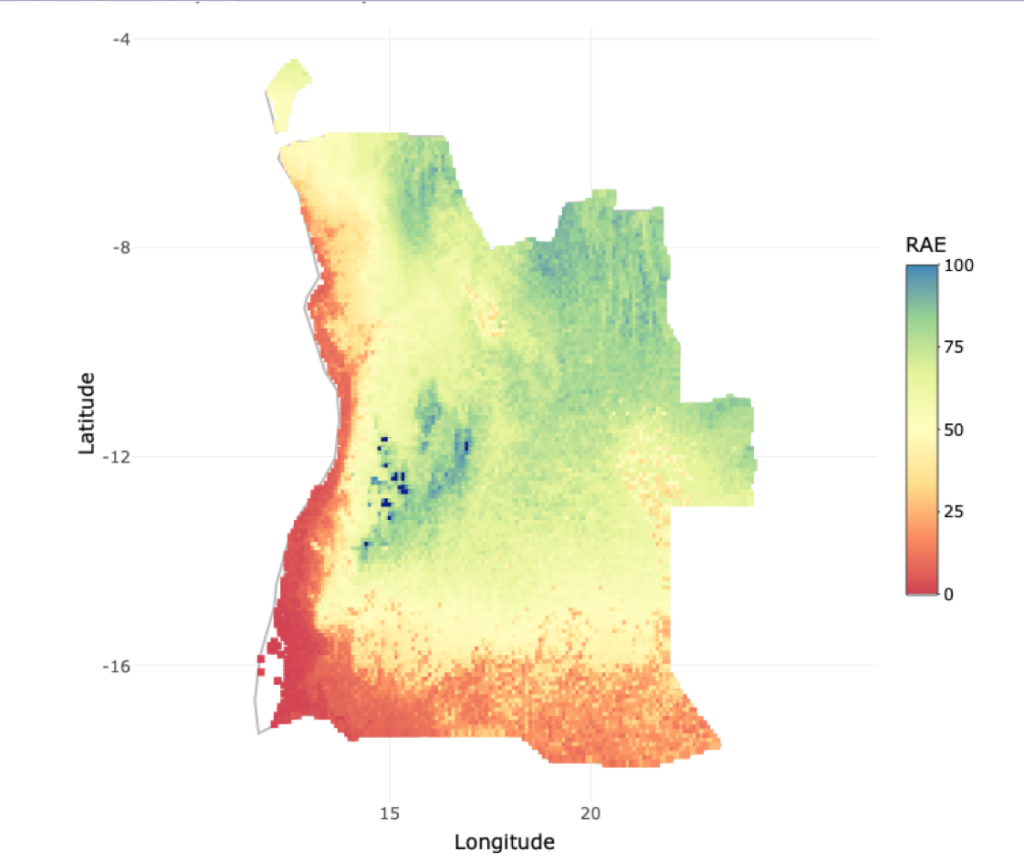
Angola, CABMTC
Relative agronomic effectiveness of Minjingu phosphate rock for Ethiopia and Tanzania and two types of Cabinda phosphate rock for Angola (CABUT and CABMTC) on maize.
Under the United States Agency for International Development (USAID) Bureau for Resilience and Food Security (RFS)-funded Sustainable Opportunities for Improving Livelihoods with Soils (SOILS) Consortium, IFDC has expanded PRDSS and seamlessly integrated it into a comprehensive platform to identify target areas for phosphorus response and facilitate direct application of phosphate rock. IFDC has implemented a versatile interface for PRDSS, enabling on-demand execution by third parties, such as SOFIIA (Niger) and Minbos (Angola). This features automatic data acquisition from external sources, such as iSDAsoil, NASA Prediction of Worldwide Energy Sources (Power ), and MarkSim. The system has an internal database that enables users to run simulations using existing data on phosphate rock, soils, crops, and sites. Additionally, users can input their own data for site-specific simulations or for regions of interest.
One of the key outputs generated by the PRDSS is relative agronomic effectiveness; a value of 100% indicates that the performance of the phosphate rock is identical to water-soluble phosphorus fertilizer. The soil, crop, and climate data for Ethiopia, Tanzania, and Angola were used to generate the relative agronomic effectiveness of Minjingu phosphate rock on maize for Ethiopia and Tanzania and two types of Cabinda phosphate rock (CABUT and CABMTC) for Angola on maize.
ISFM Trials In Ethiopia
During the 2022 cropping season, trials were conducted in Ethiopia through the USAID RFS-funded SOILS Consortium to evaluate the effects of ISFM, with treatments designed to reclaim acid soils in high-potential areas and utilize water harvesting and improved tillage in the lowlands. A total of 12 sites were selected to grow maize, wheat, and teff.
The results of the trials showed that reducing the recommended rate of nitrogen and potassium from commercial fertilizers and substituting organic fertilizer (compost/vermicompost) gave comparable grain yield of wheat and teff in the first season. Biomass yield, however, was higher with commercial fertilizer, though the difference was not statistically significant (Figures 1 and 2).
In the lowland areas, the introduction of an improved Berken plow and application of organic fertilizer, with a reduction in commercial fertilizer, gave a better teff grain yield (Figure 3).
A repeat of these trials would be expected to give rise to much improved yields, as organic matter buildup and moisture conservation would improve with these practices over time.
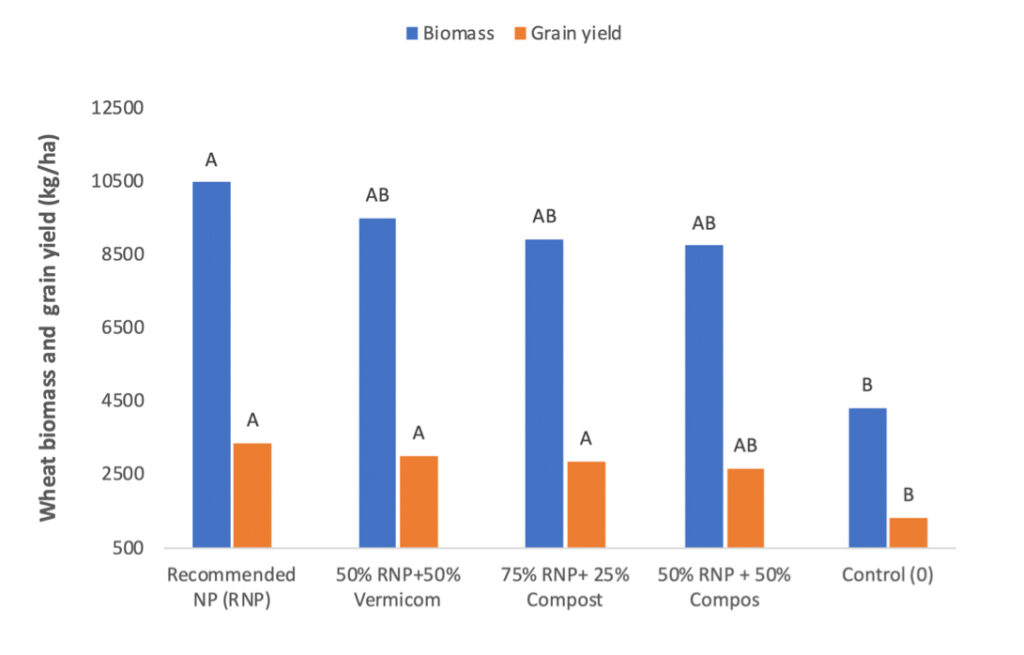
Figure 1

Figure 2
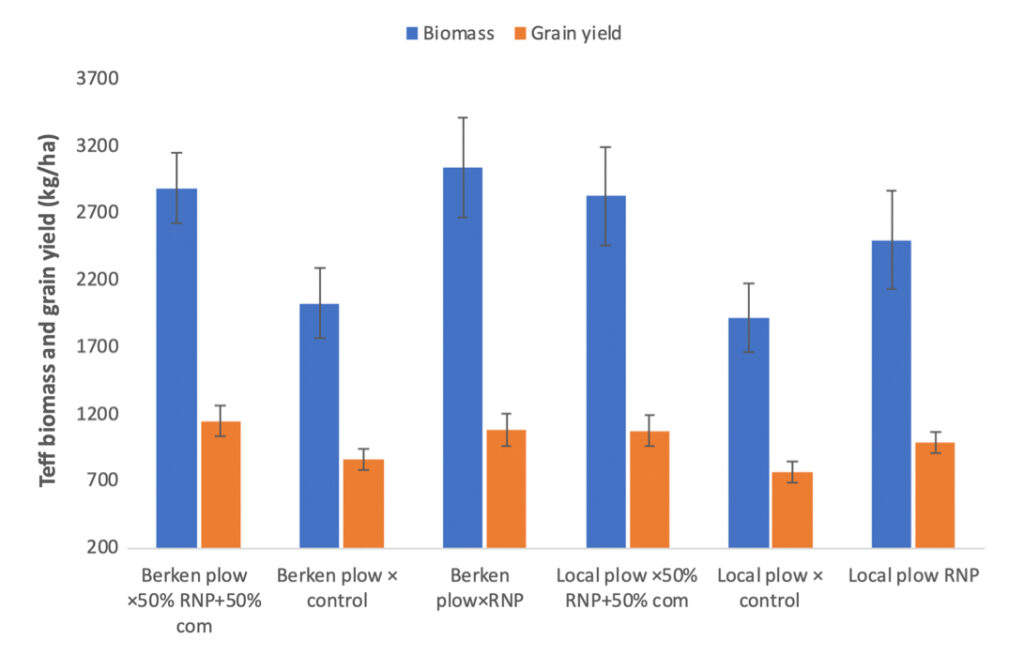
Figure 3
Innovative Product Development: Zinc
Improving micronutrient delivery through fertilizers is important because micronutrients, such as zinc, iron, and manganese, are essential for plant growth and development. However, these micronutrients are often deficient in soils, leading to reduced crop yields and poor plant health. Micronutrient deficiencies can also have negative effects on human health, as many of these are important for human nutrition.
A project was established with the objective of developing innovative products to improve micronutrient delivery using monoammonium phosphate (MAP), diammonium phosphate (DAP), triple superphosphate (TSP), NPK, and urea fertilizers as carriers. A relevant literature review was carried out and subsequent discussions narrowed the scope of the project to MAP as the carrier and zinc as the micronutrient.
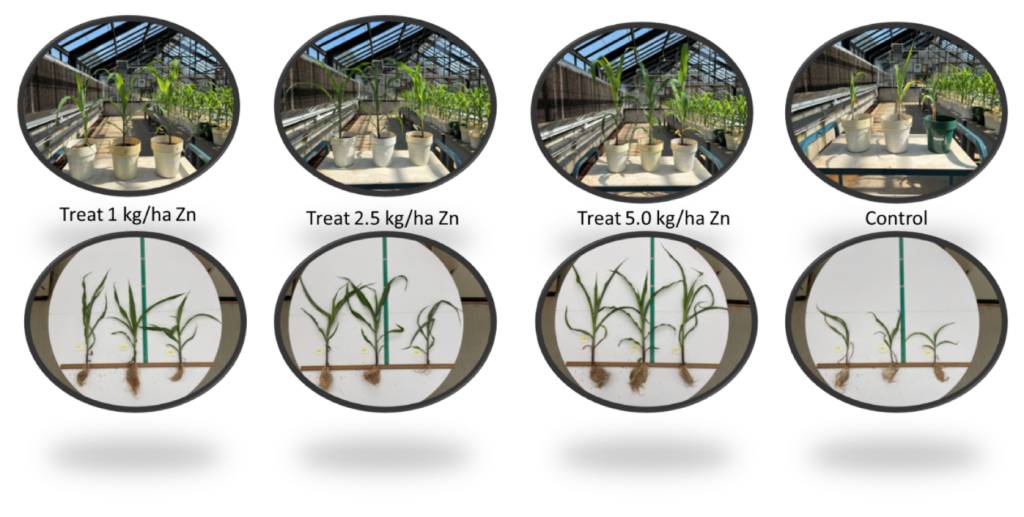
Effect of selected coating formulations on maize in the greenhouse.
Initial formulation work examined different coating methods, leading to the identification of three primary ways of coating zinc sources, such as zinc oxysulfate, zinc oxide, zinc EDTA, and zinc sulfate, at different concentrations. In phase one, three formulations were chosen out of more than 100 for greenhouse evaluation. Two of the formulations showed promising positive results. In phase 2, four different formulations were chosen for evaluation in 2023 for their efficacy under greenhouse conditions.
Subsequent work will focus on downstream processes, such as micronutrient addition during fertilizer manufacturing processes. Encouraging results from these studies will lead to the development of new formulations based on the standard MAP production processes.
Africa Fertilizer Watch
In response to the crisis caused by the Russia-Ukraine war and fertilizer supply chain issues, the USAID RFS-funded activities to increase the availability of, access to, and efficient use of fertilizers. Thus, the Africa Fertilizer Watch was launched in June 2022 to provide timely and crucial information on fertilizer markets to facilitate decision-making in terms of supply gaps for the cropping season at the continental level and risks (markets, prices, logistics) associated with the fertilizer value chain.

The Africa Fertilizer Watch is a monitoring system to inform decisions on making fertilizer available at the right time for application in the countries of sub-Saharan Africa. This is an effort to minimize the effects of an imminent food crisis in Africa. The goal of this dashboard is to support development partners and the private sector to respond efficiently and effectively as the global fertilizer crisis evolves, ensuring that sufficient quantities and appropriate fertilizers reach farmers in time for planting. The Africa Fertilizer Watch contains information on a series of indicators to provide an understanding of the availability and affordability of fertilizers. It serves as an early warning system with regard to farmers’ access to and use of fertilizers across Africa and, ultimately, food security.
Engineering & Pilot Plant Services
In 2022, the pilot plant and engineering teams conducted 15 projects for 10 industry partners. The projects included:
Granulation projects
- Granulation of low-pH NPKs
- Granulation of a slow-release additive in urea
- Granulation of ammonium phosphates to improve phosphate efficiency
- Biochar granulation
- Nitrophosphate granulation
Incorporation projects
- Incorporation of a mineral into nitrogen-based fertilizers
- Incorporation of secondary nutrients into ammonium phosphate and superphosphates
Product characterizations and evaluations
- Product characterizations and physical properties testing at the request of various clients
Engineering
- Engineering design for plant equipment
In addition to these projects, improvements were made to the pilot plant facilities, including major electrical repairs for the medium-scale pilot plant and the ordering of new elevators for the large-scale pilot plant.
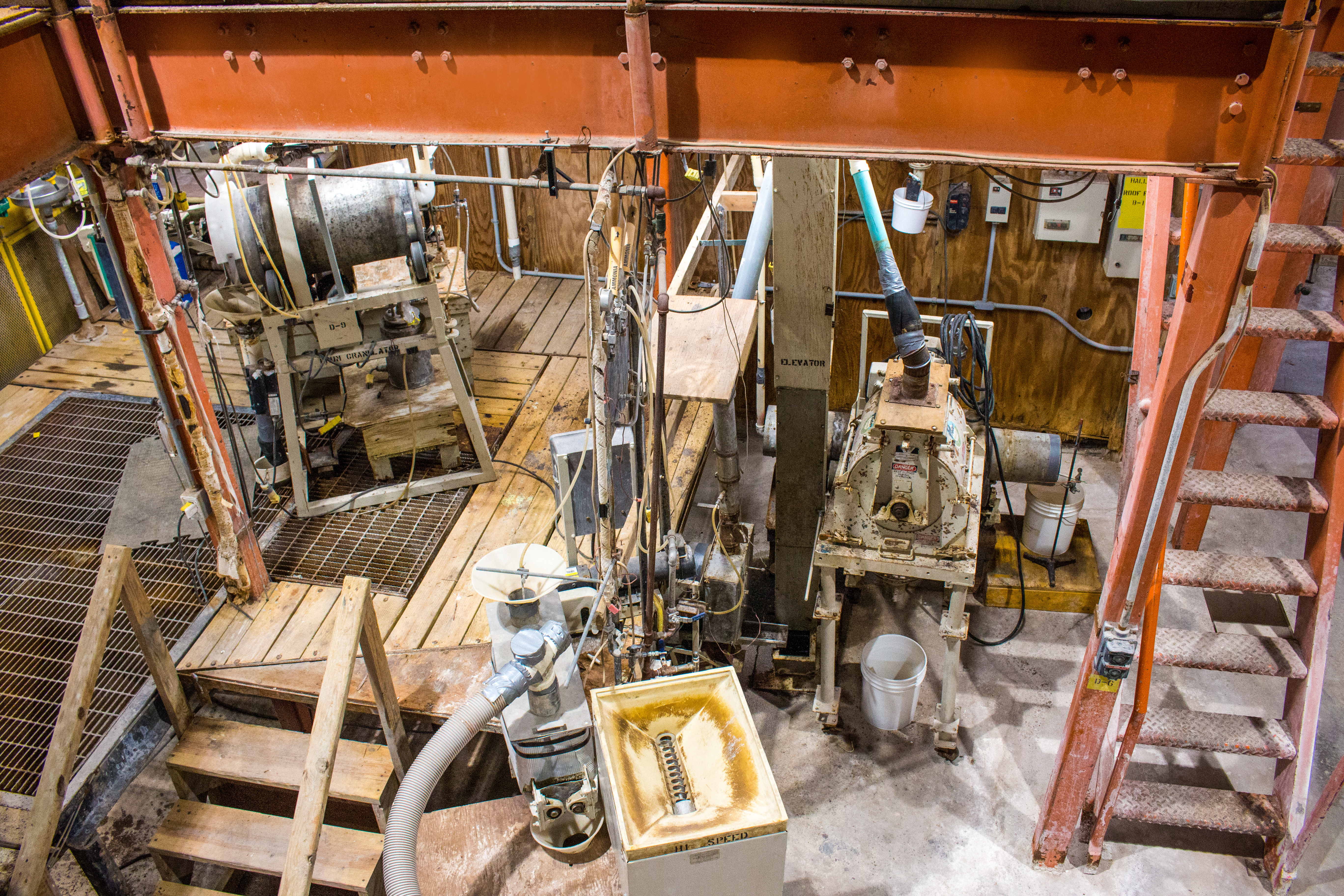
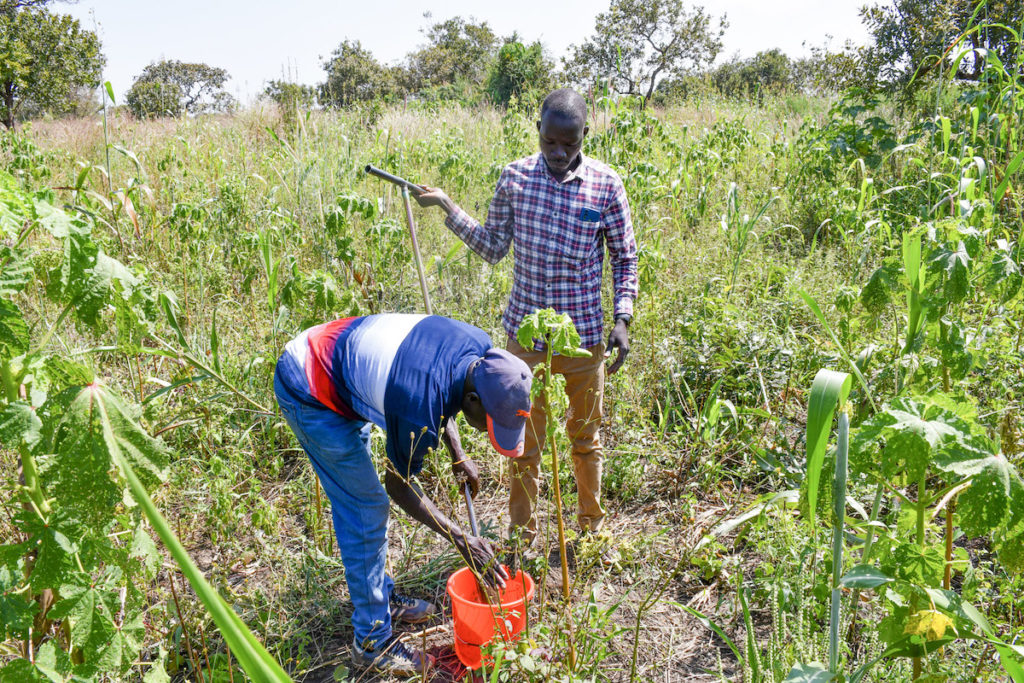
Space To Place: An Initiative For Increasing Fertilizer Use Efficiency
IFDC’s flagship program, the SOILS Consortium, funded by USAID RFS, responding to the fertilizer supply crisis, initiated a novel program, Space to Place, an initiative that seeks to provide localized and improved fertilizer and agronomic recommendations for key mixed production systems in sub-Saharan Africa (SSA), including maize, cereal-root crops, and highland systems, and agropastoral systems. The primary goal of the Space to Place initiative is to increase fertilizer use efficiency for resource-constrained smallholder farmers in SSA to reduce fertilizer wastage at the farm level by 60% over the next two to three cropping seasons for optimal economic returns. This will be done through the promotion of targeted site-specific fertilizer and soil management recommendations for selected crops with the help of geo-referenced spatial tools – soil mapping and remote sensing-based information. To do this, the Space to Place initiative will collaborate with ISRIC – World Soil Information, national and international research organizations, the U.S. Department of Agriculture’s Agricultural Research Service, the private sector, and civil society organizations to update and fine-tune fertilizer recommendations across various agroecologies using spatially derived tools, such as soil maps.

In general, the Space to Place initiative enables the delivery of spatially appropriate soil fertility management recommendations, guided by digitized soil maps (Space) combined with farm(er)-level characteristics (Place), for effective agronomic and fertilizer recommendations that increase nutrient use efficiency and maintain or surpass current productivity levels. The major outcome of this initiative will be a space-to-place decision support tool that can sustainably improve soil fertility, with a medium- and long-term focus on improving nutrient uptake and use efficiency through localized soil fertility recommendations.
2022 highlights of IFDC’s work in West Africa include developing fertilizer data management, visualization and dissemination methods, increasing the adoption of efficient and targeted fertilizer techniques, supporting seed sector development and professionalization, building more inclusive farm-to-market agribusiness clusters, and enhancing interactions between scientific, financial, and government bodies.
North and West Africa Project Updates
Swipe or use keyboard arrows to navigate. Click project for more info.

Insight West: Engaging Youth In Partnership To Improve Productivity & Income
Nigeria’s agriculture sector employs approximately two-thirds of the country’s total labor force and contributes 40% of Nigeria’s GDP. Horticultural production, mainly centralized in the northern region, is characterized by low-input, low-yield, high-risk perishable production systems, volatile prices, with significant pest and disease issues, and a logistically intensive value chain.
To help remedy these issues, the HortiNigeria program, funded by the Embassy of the Kingdom of the Netherlands in Nigeria, aims to facilitate the development of a sustainable and inclusive horticulture sector that contributes to food and nutrition security in Nigeria by enhancing smallholder farmers’ social capital and contributing to their empowerment within the market. The program particularly focuses its interventions on women and youth.
Traditional Practices, New Perspectives
Twenty-nine-year-old Muhammad Yakubu Bubayaro was born near and grew up around the Mile 12 International Market in Lagos State, one of the largest markets in Africa. His father, Alhaji Muhammad, was the chairman of the market from 1998 to 2002. Thus, Bubayaro was privileged to be exposed to the dynamics of market activities in the horticulture value chain from a young age.
“Several challenges hinder efficient supply and demand of produce, particularly vegetables from the northern part of the country, to the market, which is located in the south, limiting the potential of actors across the value chain,” explained Bubayaro during a visit organized by the HortiNigeria program to the market.
According to him, challenges include inadequate logistics, dysfunctional regulation of payments of farmers, lack of reliable market agents, use of raffia baskets by farmers in supplying tomatoes, and revenue and produce loss, among others. With the various components of HortiNigeria aiming to provide solutions to the existing challenges, Bubayaro foresees a partnership that will nurture transformational change, boosting income and improving markets within the horticulture sector.
Digital Innovation For Distant Markets
Bubayaro is one of many young people who employ digital media and information technology solutions to access information on market prices, improving the availability of market information to smallholder farmers. However, to harness the potential within the value chain, Bubayaro seeks to build his capacity, particularly in developing the appropriate network necessary for alleviating supply shortfalls. Therefore, he was delighted to receive an invitation to participate in a vegetable sourcing mission, a collaborative event organized by HortiNigeria and Seeds for Change in Kano State.
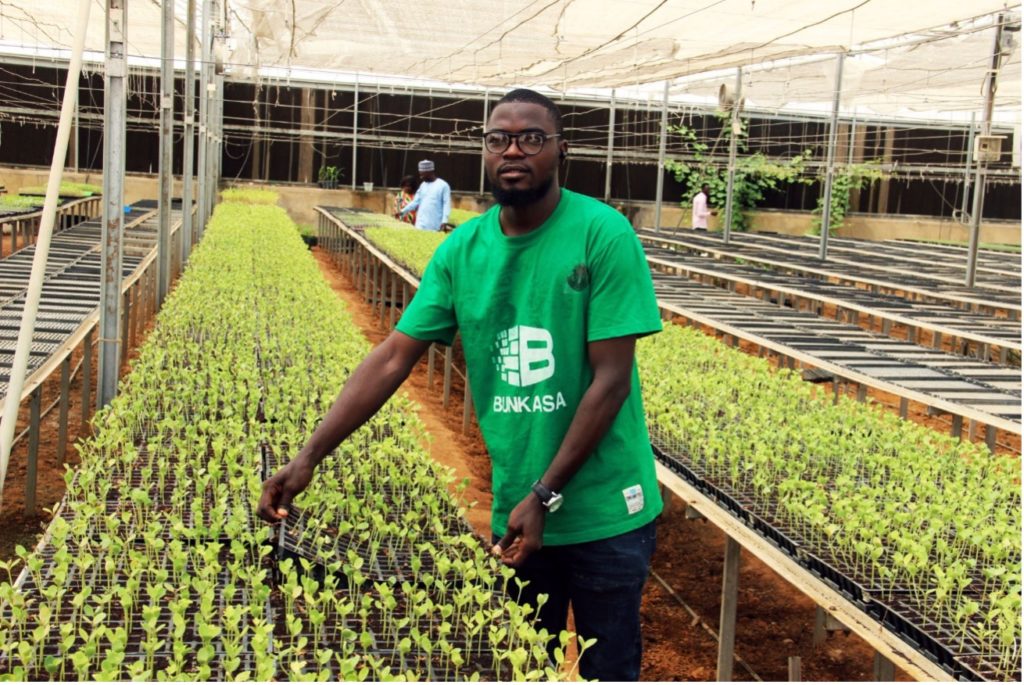
The event created networking opportunities for various stakeholders and institutions within the downstream sector of the value chain, including the Centre for Dryland Agriculture (CDA), exposing Bubayaro to commercial nurseries that boost the chances of quality hybrid seed adoption by smallholder farmers. Similarly, business-to-business linkages between farmers and the International Market were established through the event.
Since its inception, the HortiNigeria program has offered training on fertilizer application, using crop-specific fertilizer blends, and achieving optimum crop yields with simple but pragmatic climate-smart actions. The program has trained over 12,174 smallholder farmers in Kaduna and Kano states on mulching and other eco-efficient practices; 40.7% of these farmers are women and 77.2% youth (under 35 years old).
2022 highlights of IFDC’s work in East Africa include a focus on strengthening access to improved, quality seed for smallholder farmers, teaching climate-smart practices, and enhancing participation of women and youth in agricultural market systems.
East and Southern Africa Project Updates
Swipe or use keyboard arrows to navigate. Click project for more info.
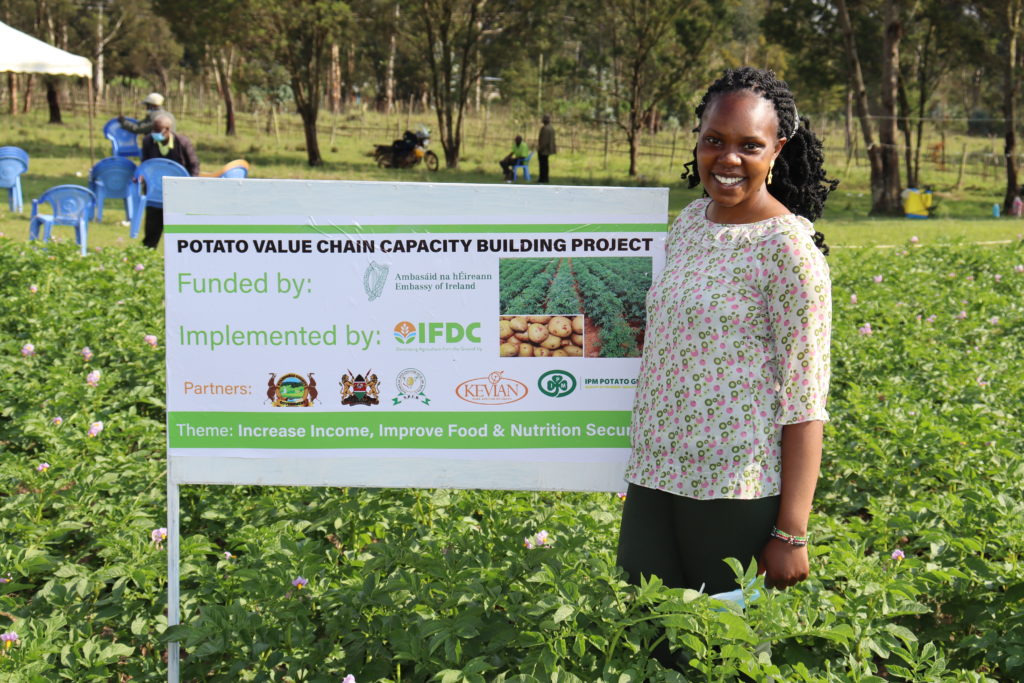
Insight East: Reclaiming Kenya’s Food Basket: Value Chain Capacity Building
For many years, Nyandarua County was known as Kenya’s food basket. However, many different elements, from deforestation and monocropping to drought, pests, and poor seed quality, have caused Kenya’s agricultural production levels to deteriorate and contributed to the yield decline that many Kenyan farmers are facing. Ann Gitari, a farmer in Nyandarua, explained: “The Nyandarua we have today is not the same as it was when I was growing up. Things have really changed. Rains are no longer predictable, and our farms are not as productive as they used to be.”
The Potato Value Chain Capacity Building (PCB) project has been working to address these factors through the Farmer Field Business School (FFBS) model. The model’s strength stems from the integration of various components that improve farming knowledge, skills, and practices, especially for women. The FFBS model promotes sustainable agricultural practices, market engagement, gender and youth equity, food and nutrition security, group empowerment, and monitoring and evaluation. These components also improve results across the food and nutrition security spectrum.
Through the FFBS model, farmers involved in the PCB project have been trained to maximize productivity on their farms by adopting new technologies that are more efficient and sustainable. The model uses a hands-on approach to instill practical knowledge and skills in farmers on improved farming practices, from land preparation through harvesting and post-harvest handling, and crop rotation to help ensure nutrients are replenished in the soils. By adopting good agricultural practices, farmers have produced more food to feed their households and to sell at the market.
“The training is structured to create a lasting impact on many farmers in our area. For example, demonstration plots are used to reveal how the technology can be utilized to conserve water during potato planting and provide a great environment for the development of tubers,” says Rosemary Wanjiru.
IFDC, through PCB, has been helping farmers learn the importance of soil testing, which helps to address the nutritional content of their soil and the level of its acidity. During field days, agricultural stakeholders, including agrochemical and fertilizer companies, the International Centre of Insect Physiology and Ecology (icipe), and the International Institute of Tropical Agriculture (IITA), have been instrumental in emphasizing the need for soil testing. The Nyandarua County Department of Agriculture has also expressed interest in the aspects of soil testing taught during PCB field trainings.
Beyond Fertilizer: Using Certified seed
Another important factor being addressed by the PCB project is the availability and use of quality seed. Over the years, farmers in Africa have lost out on much crop productivity and income because they use low-quality seeds with poor germination capacity. For example, farmers’ seeds in Nyandarua County had been reused and replanted for so long that their genetic potential deteriorated, making them increasingly prone to pests and diseases. However, through PCB, farmers have recognized the need for certified seeds with higher genetic potential and increased resistance to pests and diseases.
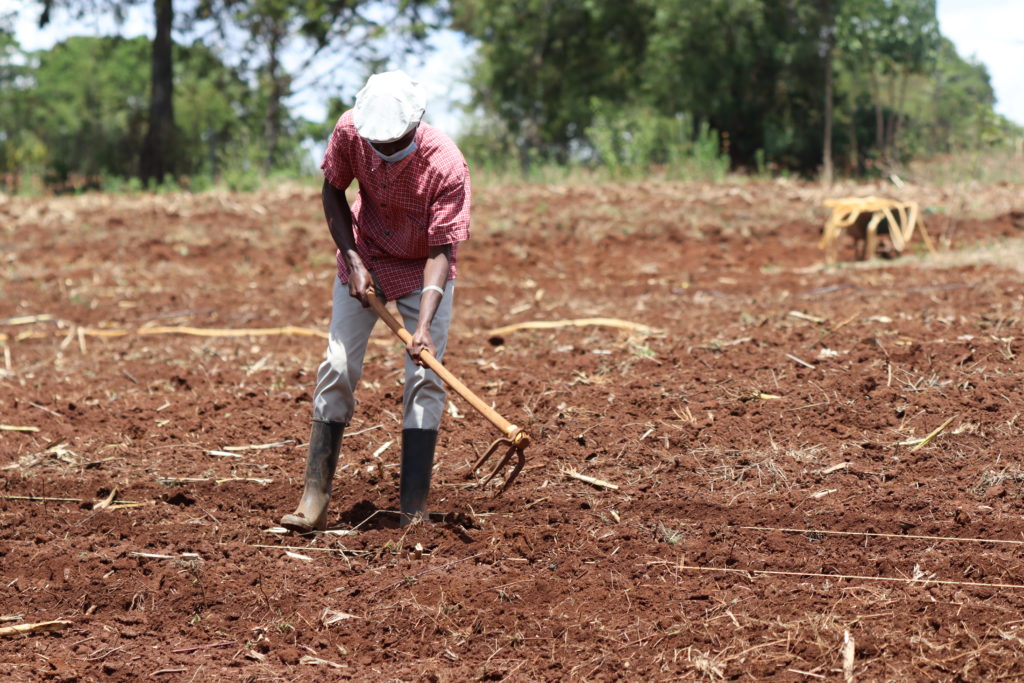
Many farmers have embraced the planting of certified seeds, which has resulted in increased production. IFDC is playing a pivotal role in linking them to certified seed suppliers to obtain high-quality seeds at reliable prices. As a result, some farmers are forming groups to produce clean seeds and distribute them to the rest of the farmers in their community.
IFDC’s emphasis on managing soil fertility and using quality seed leads to improved production in quality and quantity of produce – allowing farmers to get maximum production from their farms.
2022 saw IFDC projects active in India’s Assam and Telangana States and in Nepal. These projects worked to introduce efficient fertilizer technologies, improve fertilizer availability, share techniques to improve fertilizer efficiency, conduct soil mapping to identify nutrient requirements, and engage women and youth in the agriculture sector.
Asia Project Updates
Swipe or use keyboard arrows to navigate. Click project for more info.
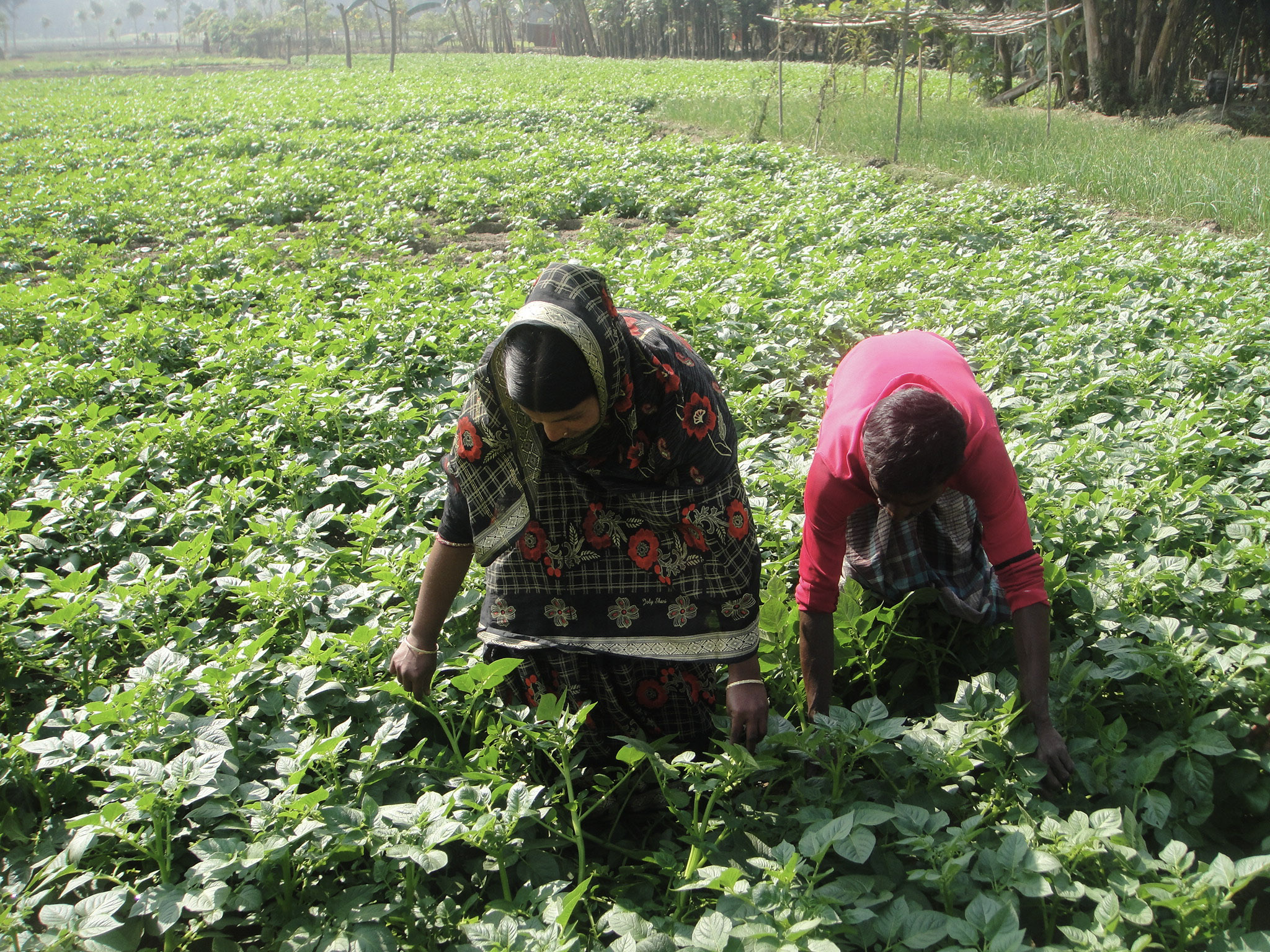
Champions Of Sustainable Soil Health, Markets & Productivity
In India, women’s responsibilities as wives, mothers, and daughters are often coupled with work in agriculture. Female farmers perform most farming jobs, from sowing to harvesting, starting their day before sunrise and continuing until late in the evening. However, their access to resources is minimal compared to their male counterparts, and to achieve socio-economic empowerment, they must be supported to participate in promising advances in production systems.
Over the past several decades, the efforts of the Indian Government and civil society organizations have seen some successes. Despite improvements, however, a gender gap still exists in access to education, productive resources, and finance. Closing this gender gap is essential to accelerating the pace of growth in the agriculture sector.
The Accelerating Farm Incomes (AFI) project is a partnership between IFDC and the Walmart Foundation that aims to build sustainable soil health, markets, and productivity in Telangana State, India. The project seeks to strengthen and reorient agricultural production systems in peri-urban agriculture and rural locations through technology dissemination, knowledge sharing and capacity building, and micro-enterprise development. These diversified components are crucial for a sustainable market-driven agricultural production system.
Empowerment Through Proactive Engagement
Gender disparities are profound in Telangana State. The AFI project is addressing these inequalities by proactively recruiting unemployed women as rural resource persons, known as AFI Champions, providing training on entrepreneurial skills, helping them access loans, connecting them to the markets, and guiding them in setting up and operating successful agribusinesses. As a result, these women AFI Champions serve in leadership roles in their areas. Additionally, the project is specifically promoting gender-neutral agricultural technologies and production practices. Information and communication technologies are being used extensively to benefit individuals who might have challenges traveling outside their villages.
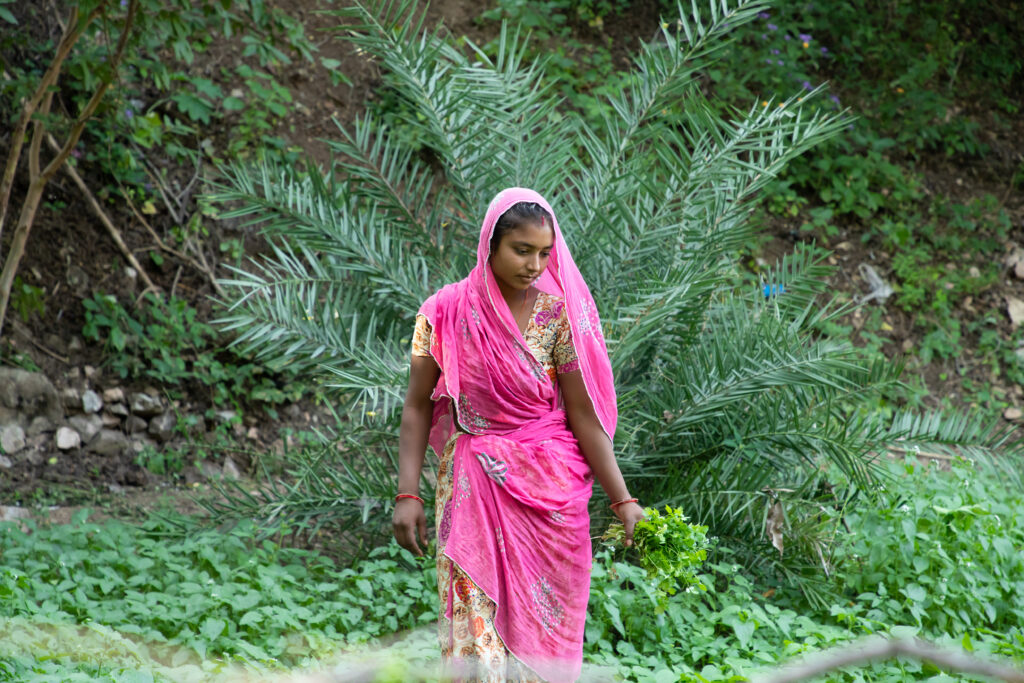
The AFI project focuses on critical issues that limit crop productivity and farmers’ income by increasing awareness and enhancing farmers’ knowledge of good agriculture practices (GAPs) and precision agricultural technologies (PATs). Farmers are being introduced to site-specific technologies (seed, fertilizers, crop protection practices, and other inputs) that suit Telangana’s marginal soils, which have severe nutrient deficiencies (low nitrogen and phosphorus levels) in semi-arid/rainfed conditions. The project interventions are creating viable marketing pathways and sustainable opportunities for farmers’ to sell produce and optimize their income.
The AFI project interventions will directly benefit at least 30,000 farmers, including 40% women, and socio-economically disadvantaged communities. Over the course of the project, AFI will systematically select, train, and coach 600 rural unemployed youth on becoming agri-entrepreneurs who promote GAPs and PATs in their respective areas, continuing beyond the project duration. In addition, 300 agro-input dealers will be mentored in providing efficient services to their customers. The project is working with stakeholders across the value chain to ensure efficient service delivery for the beneficiary farmers.
Publications and Presentations
The following technical publications and presentations are a representation of the work our highly skilled researchers and field experts accomplished in 2022. These, and much of our other research, can be accessed here.
Publications
Abeka, H, I.Y.D. Lawson, E. Nartey, T. Adjadeh, S. Asuming-Brempong, P.S. Bindraban, and W.K. Atakora. 2022. “Effectiveness of Neem Materials and Biochar as Nitrification Inhibitors in Reducing Nitrate Leaching in a Compost-Amended Ferric Luvisol,” Frontiers in Soil Science, 2:1023743. https://doi.org/10.3389/fsoil.2022.1023743
Adzawla, W., P.S. Bindraban, W.K. Atakora, O. Camara, and A. Gouzaye. 2022. “Economic Viability of Smallholder Agriculture in the Savannah and Transitional Zones of Ghana: Implications of Farm Output Commercialization and Farm Diversification,” Sustainability, 14:11548. https://doi.org/10.3390/su141811548
Adzawla, W., R. Pandey, C. Dimkpa, C. Freeman, Y.B. Kassim, and P.S. Bindraban. 2022. “Identification and Exploration of Evidence-Based Responsible Fertilizer Use in Ghana,” Book of Abstracts from the 2022 FERARI Coordination Conference, Accra-Tamale, Ghana, IFDC FERARI Research Report 10.
Agyin-Birikorang, S., I. Tindjina, J. Fugice Jr., H.W. Dauda, A.R. Issahaku, M. Iddrissu, and U. Singh. 2022. “Optimizing Sulfur Fertilizer Application Rate for Profitable Maize Production in the Savanna Agroecological Zones of Northern Ghana,” Journal of Plant Nutrition. https://doi.org/10.1080/01904167.2022.2063740
Agyin-Birikorang, S., I. Tindjina, J. Fugice Jr., H.W. Dauda, A.R. Issahaku, and M. Iddrissu. 2022. “Zinc Application Rate for Optimal Profitability of Maize Production Systems in the Savanna Agroecological Zones of Northern Ghana,” Journal of Plant Nutrition. https://doi.org/10.1080/01904167.2022.2064300
Agyin-Birikorang, S., I. Tindjina, R. Adu-Gyamfi, H.W. Dauda, J. Fugice Jr., and J. Sanabria. 2022. “Managing Essential Plant Nutrients to Improve Maize Productivity in the Savanna Agroecological Zones of Northern Ghana: The Role of Secondary and Micronutrients,” Journal of Plant Nutrition. https://doi.org/10.1080/01904167.2022.2027984
Agyin-Birikorang, S., I. Tindjina, R. Adu-Gyamfi, J. Fugice Jr., H.W. Dauda, A.B. Angzenaa, and J. Sanabria. 2022. “Optimizing Fertilizer Use Efficiency for Sustainable Maize Production in Strongly Acid Soils of the Sudan Savanna Agroecological Zone of Northern Ghana,” Journal of Plant Nutrition. https://doi.org/10.1080/01904167.2022.2064291
Agyin-Birikorang, S., R. Adu-Gyamfi, I. Tindjina, J. Fugice Jr., H.W. Dauda, and J. Sanabria. 2022. “Synergistic Effects of Liming and Balanced Fertilization on Maize Productivity in Acid Soils of the Guinea Savanna Agroecological Zone of Northern Ghana,” Journal of Plant Nutrition. https://doi.org/10.1080/01904167.2022.2046083
Agyin-Birikorang, S., R. Adu-Gyamfi, I. Tindjina, J. Fugice Jr., H.W. Dauda, U. Singh, and J. Sanabria. 2022. “Ameliorating Incongruent Effects of Balanced Fertilization on Maize Productivity in Strongly Acid Soils with Liming,” Journal of Plant Nutrition. https://doi.org/10.1080/01904167.2022.2064293
Agyin-Birikorang, S., U. Singh, I. Tindjina, A.R. Issahaku, H.W. Dauda, and C. Boubakary. 2022. “Resilient Fertilization Strategies to Enhance Rice Productivity in Submergence-Prone Areas,” Growing Africa, 1:27-31. https://doi.org/10.55693/ga11.tvtv2244
Ahmed, R., Q. Genga, M. Ngunjiri, L. Vergutz, and J. Wendt. 2022. “Relative Performance of Coated Blends, Granular Blends and Compound Fertilizers on Maize Yield,” International Journal of Applied Agricultural Sciences, 8(6):259-264. https://doi.org/10.11648/j.ijaas.20220806.19
Araya, A., P.K. Jha, Z. Zambreski, A. Faye, I.A. Ciampitti, D. Min, P.H. Gowda, U. Singh, and P.V.V. Prasad. 2022. “Evaluating Crop Management Options for Sorghum, Pearl Millet and Peanut to Minimize Risk Under the Projected Midcentury Climate Scenario for Different Locations in Senegal,” Climate Risk Management, 36:100436. https://doi.org/10.1016/j.crm.2022.100436
Bindraban, P., 2022. “This War Will Claim More Lives through Hunger in Africa than Violence in Ukraine.” https://ifdc.org/2022/04/25/this-war-will-claim-more-lives-through-hunger-in-africa-than-violence-in-ukraine/
Boullouz, M., P.S. Bindraban, I.N. Kissiedu, A.K.K. Kouame, K.P. Devkota, and W.K. Atakora. 2022. “An Integrative Approach Based on Crop Modeling and Geospatial and Statistical Analysis to Quantify and Explain the Maize (Zea mays) Yield Gap in Ghana,” Frontiers in Soil Science, 2:1037222. https://www.frontiersin.org/articles/10.3389/fsoil.2022.1037222/full
Bumb, B.L., J.C. Katyal, and U. Singh. 2022. “Building Bridges Between Natural Nutrient Sources and Fertilizers for Soil Health and Sustainable Food Security,” IN Soil Organic Carbon and Feeding the Future: Basic Soil Processes, pp. 63-101, R. Lal (Ed.), CRC Press.
Camara, O., W. Adzawla, and P.S. Bindraban. 2022. “Agricultural Transformation, Developments and Strategies in Africa,” Fertilizer Focus, 39(4):48-51.
Dimkpa, C.O., M.G.N. Campos, J. Fugice Jr., K. Glass, A. Ozcan, Z. Huang, U. Singh, and S. Santra. 2022. “Synthesis and Characterization of Novel Dual-Capped Zn–Urea Nanofertilizers and Application in Nutrient Delivery in Wheat,” Environmental Science Advances, 1:47-58. https://doi.org/10.1039/D1VA00016K
Eldridge, S.M., A. Pandey, A. Weatherley, I.R. Willett, A.K. Myint, A.N. Oo, K. Ngwe, Z.T. Mang, U. Singh, and D. Chen. 2022. “Recovery of Nitrogen Fertilizer Can be Doubled by Urea-Briquette Deep Placement in Rice Paddies,” European Journal of Agronomy, 140:126605. https://doi.org/10.1016/j.eja.2022.126605
Gautam, S., U. Tiwari, B. Sapkota, B. Sharma, S. Parajuli, N.R. Pandit, Y.K. Gaihre, and K. Dhakal. 2022. “Field Evaluation of Slow-Release Nitrogen Fertilizers and Real-Time Nitrogen Management Tools to Improve Grain Yield and Nitrogen Use Efficiency of Spring Maize in Nepal,” Heliyon, e09566. https://doi.org/10.1016/j.heliyon.2022.e09566
Gautam, S., Y.K. Gaihre, G.D. Acharya, P. Dongol, and D. Choudhary. 2022. “Fertilizer Demand-Supply Gap and Avenues for Policy Revisits in Nepal,” SAARC Journal of Agriculture, 20(2):223-234. https://doi.org/10.3329/sja.v20i2.63583
Hakimi, S.S., R. Raina, and Y.S. Saharawat. 2022. “Postharvest Treatments and Maturity Stages Impact Sensory Attributes and Shelf Life of Tomato Fruits Var. Pearson Kept in Zero Energy Cool Chamber,” Emirates Journal of Food and Agriculture, 34(7):16-28. https://doi.org/10.9755/ejfa.2022.v34.i7.2893
Islam, S.M.M., Y.K. Gaihre, M.R. Islam, A. Khatun, and A. Islam. 2022. “Integrated Plant Nutrient Systems Improve Rice Yields Without Affecting Greenhouse Gas Emissions from Lowland Rice Cultivation,” Sustainability, 14(18):11338. https://doi.org/10.3390/su141811338
Islam, S.M.M., Y.K. Gaihre, Md. R. Islam, Md. N. Ahmed, M. Akter, U. Singh, and B.O. Sander. 2022. “Mitigating Greenhouse Gas Emissions from Irrigated Rice Cultivation Through Improved Fertilizer and Water Management,” Journal of Environmental Management, 307:114520. https://doi.org/10.1016/j.jenvman.2022.114520
Jat, M.L., D.K. Jaiswal, and Y.S. Saharawat. 2022. “Extent of Knowledge and Adoption of Recommended Wheat Production Practices Among Wheat Growers in Malwa Region (M.P.),” Indian Journal of Extension Education, 58(1):40-43. https://doi.org/10.48165/IJEE.2022.58109
Joon, R., R. Majumdar, M. Chahar, J. Gogoi, and Y.S. Saharawat. 2022. “Nutrient Management – Importance and Judicious and Balanced Use of Fertilizers through 4-R Principles,” Assam Agribusiness and Rural Transformation-ARIAS Society.
Jung, J.-Y., J.-H. Kim, M. Baek, C. Cho, J. Cho, J. Kim, W. Pavan, and K.-H. Kim. 2022. “Adapting to the Projected Epidemics of Fusarium Head Blight of Wheat in Korea Under Climate Change Scenarios,” Frontiers in Plant Science, 13:1040752. https://doi.org/10.3389/fpls.2022.1040752
Kassam, A., Y.S. Saharawat, and I.P. Abrol. 2022. “Conservation Agriculture for Sustainable Intensification,” IN Conservation Agriculture in India: A Paradigm Shift for Sustainable Production,” A.R. Sharma (Ed.), Routlege Imprints London. https://doi.org/10.4324/9781003292487
Magro, S.Z., W. Pavan, W. Dallagasperina, R. Vargas, J.M.C. Fernandes, and C. Holbig. 2022. “Device for Relaying LoRaWAN Messages,” Brazilian Journal of Applied Computing, 14(2):47-55. https://doi.org/10.5335/rbca.v14i2.13368
Majumdar, R., M. Chahar, R, Joon, J. Gogoi, and Y.S. Saharawat. 2022. “Soil Testing – Need and Sample Collection Procedure,” Assam Agribusiness and Rural Transformation-ARIAS Society.
Martey, E., P.M. Etwire, W. Adzawla, W.K. Atakora, and P.S. Bindraban. 2022. “Perceptions of COVID-19 Shocks and Adoption of Sustainable Agricultural Practices in Ghana,” Journal of Environmental Management, 320:115810. https://doi.org/10.1016/j.jenvman.2022.115810
Paleari, L., T. Li, Y. Yang, L.T. Wilson, T. Hasegawa, K.J. Boote, S. Buis, G. Hoogenboom, Y. Gao, E. Movedi, F. Ruget, U. Singh, C.O. Stöckle, L. Tang, D. Wallach, Y. Zhu, and R. Confalonieri. 2022. “A Trait-Based Model Ensemble Approach to Design Rice Plant Types for Future Climate,” Global Change Biology, 28:2689.2710. https://doi.org/10.1111/gcb.16087
Pandit, N.R., D. Choudhary, S. Maharjan, K. Dhakal, S.P. Vista, and Y.K. Gaihre. 2022. “Optimum Rate and Deep Placement of Nitrogen Improves Nitrogen Use Efficiency and Tomato Yield in Nepal,” Soil Systems, 6(3):72. https://doi.org/10.3390/soilsystems6030072
Pandit, N.R., Y.K. Gaihre, D. Choudhary, R. Subedi, S.B. Thapa, S. Maharjan, D. Khadka, S.P. Vista, and L. Rusinamhodzi. 2022. “Slow But Sure: The Potential of Slow-Release Fertilizers to Increase Crop Productivity and Farm Profit in Nepal,” Plant Nutrition. https://doi.org/10.1080/01904167.2022.2067053
Pandit, N.R., Y.K. Gaihre, S. Gautam, S. Maharjan, S. Vista, and D. Choudhary. 2022. “Enhanced-Efficiency Nitrogen Fertilizer Boosts Cauliflower Productivity and Farmers’ Income: Multi-Location and Multi-Year Field Trials Across Nepal,” Experimental Agriculture, 58:E14. https://doi.org/10.1017/S0014479722000060
Parihar, C.M., H.S. Nayak, D.M. Mahala, S.L. Jat, M.L. Jat Yadvinder-Singh, K. Patra, K. Majumdar, T. Satyanarayana, M.D. Parihar, and Y.S. Saharawat. 2022. “Nutrient Management in Conservation Agriculture,” IN Conservation Agriculture in India: A Paradigm Shift for Sustainable Production, A.R. Sharma (Ed.), Routlege Imprints London. https://doi.org/10.4324/9781003292487
Prajapati, D., A. Pal, C. Dimkpa, Harish, U. Singh, K.A. Devi, J.L. Choudhary, and V. Saharan. 2022. “Chitosan Nanomaterials: A Prelim of Next-Generation Fertilizers; Existing and Future Prospects,” Carbohydrate Polymers, 288:119536. https://doi.org/10.1016/j.carbpol.2022.119356
Saharawat, Y.S., M. Gill, M. Gathala, T.K. Bahadur, D.B.T. Wijeratne, S.S. Hakimi, N. Chaudhary, Md. E. Haque, R.W. Bell, C.M. Parihar, H. Nayak, R. Singh, R.K. Malik, U. Singh, R. Paroda, and A. Kassam. 2022. “Conservation Agriculture in South Asia,” IN Advances in Conservation Agriculture, Volume 3: Adoption and Spread, pp. 1-41, Amir Kassam (Ed.), Burleigh Dodds Science Publishing Ltd.
Salari, H., R.S. Antil, and Y.S. Saharawat. 2022. “The Influence of Onion (Allium cepa L.) Mother Bulb Production Conditions on Subsequent Plant Growth and Seed Quality,” Acta fytotechnica et zootechnica, 25(1). http://www.acta.fapz.uniag.sk/journal/article/view/2
Salari, H., R.S. Antil, and Y.S. Saharawat. 2022. “The Influence of Planting Dates and Field Management on Bulb Quality and Post-Harvest Losses of Onion,” Acta fytotechnica et zootechnica, 25(2). https://scholar.google.com/scholar?oi=bibs&cluster=2094192704909402169&btnI=1&hl=en
Sharma, S., R.R. Boro, P.S. Bindraban, and R. Pandey. 2022. “Soybean Leaf Proteome Analysis Revealed Differentially Abundant Proteins Involved in Foliar Iron Absorption,” abstract submitted at 43rd Annual Meeting of Plant Tissue Culture Association–India (PTCA-I) & International Symposium on “Advances in Plant Biotechnology and Nutritional Security” (APBNS-2022), April 28-30.
Tripathi, B.P., J. Timsina, S.P. Vista, Y.K. Gaihre, and B.R. Sapkota. 2022. “Improving Soil Health and Soil Security for Food and Nutrition Security in Nepal,” IN Agriculture, Natural Resources and Food Security Lessons from Nepal, pp. 121-143, Timsina, J., T.N. Maraseni, D. Gauchan, J. Adhikari, and H. Ojha (Eds.), Springer. https://doi.org/10.1007/978-3-031-09555-9_8
Presentations
Bindraban, P. 2022. “Keynote: Fertilization for Soil Health and Food Security. Global Symposium for Soils for Nutrition,” FAO Global Soil Partnership, July 26-29.
Bindraban, P. 2022. “Schokken en structurele problemen voor de Afrikaanse voedselproductie; hoe nu verder?” foodFIRST Vijverbergsessie, Den Haag, Netherlands, August 29. https://www.foodfirst.eu/2022/09/05/shocks-and-structuralissues-for-african-food-production-how-to-continue/
Bindraban, P. 2022. “Soil Health and Fertility: Identify Actionable Fertilizer and Auxiliary Interventions to Enhance Fertilizer Use Efficiency for Improvement of Soil Health and Agricultural Productivity in Africa,” Supporting the Development of a Fertilizer and Soil Health Action Plan for Africa. IFDC, ReNAPRI, AAP, FARA, African Union Commission, Bill & Melinda Gates Foundation. Nairobi, Kenya, June 20-22.
Bulo, F., M. Demiss, and J.W. Wendt. 2022. “Yield Response of Maize to Application of Nutrient Sources and Rate in Ethiopia,” IFDC/ICRISAT Joint Workshop on Targeting Fertilizer Source and Rate in Ethiopia: Sharing and Learning Together, Addis Ababa, Ethiopia, March 23-24.
Demiss, M., and U. Singh. 2022. “DSSAT as a Decision Support Tool and CERES-Teff Model Development Update,” IFDC/ ICRISAT Joint Workshop on Targeting Fertilizer Source and Rate in Ethiopia: Sharing and Learning Together, Addis Ababa, Ethiopia, March 23-24.
Genga, Q., and M. Ngunjiri. 2022. “International Women’s Day 2022: Breaking Biases in Science and Agriculture,” https://www.youtube.com/watch?v=6laGY2ai3WA
Nagarajan, L., and U. Singh. 2022. “SOILS Consortium: Introduction and Purpose,” IFDC/ICRISAT Joint Workshop on Targeting Fertilizer Source and Rate in Ethiopia: Sharing and Learning Together, Addis Ababa, Ethiopia, March 23-24.
Nagarajan, L., S. Agyin-Birikorang, E. Dossa, J.W. Wendt, W. Pavan, J. Fugice Jr., and U. Singh. 2022. “Using Phosphate Resources for Better Crop Productivity and Efficiency,” IFDC Research and Programs Committee Meeting, Muscle Shoals, Alabama USA, May 11.
Ngunjiri, M.W., and J.W. Wendt. 2022. “From Unknowns to Data-Informed Decisions: Machine Learning to Address Climate Change, Food Security & Support Farmers,” ICTforAg 2022 – The Digital Agriculture Conference, March 9-10.
Singh, U. 2022. “Impact of Decarbonization of Nitrogenous Fertilizers,” 37th World Petrochemical Conference, Chemical Fertilizers Seminar and Panel Discussion on Nitrogen, Houston, Texas USA, March 22-25.
Singh, U. 2022. “Decision Support Modeling Tools for Ethiopia (DSMT-E) Training Program,” International Livestock Research Institute (ILRI), Ethiopia, March 14-18.
Singh, U., S. Agyin-Birikorang, L. Nagarajan, A. Bationo, H. Breman, and J.W. Wendt. 2022. “IFDC’s On the Ground Experience on ISFM and Contribution to Soil Carbon,” panel discussion on Soil Carbon Sequestration and Food Security in Sub-Saharan Africa: Synergies and Tradeoffs, GIZ, March 25.
Financial Statement
The following is an unaudited summary of financial information for the year ended December 31, 2022. The full financial statements and the independent auditors’ reports are available online at this page.
Statement of Revenue & Expenses for the Year Ended December 31, 2022
| Revenues & Gains | 2022 (U.S. $’000) | 2021 (U.S. $’000) |
|---|---|---|
| AGRA | 914 | 1,102 |
| Bill & Melinda Gates Foundation | 1,238 | 258 |
| Board of Directors Donations | 8 | 41 |
| Dutch Embassies | 22,063 | 14,393 |
| International Fertilizer Association (IFA) | 104 | 100 |
| International Food Policy Research Institute (IFPRI) | 757 | 456 |
| Islamic Development Bank | 873 | 839 |
| Embassy of Ireland (Irish Aid) | 290 | 348 |
| GIZ Uganda | 284 | 497 |
| Mercy Corps | 468 | 386 |
| Millennium Challenge Corporation (MCC) | 773 | 426 |
| Netherlands Directorate-General for International Cooperation (DGIS) | 11,799 | 15,930 |
| OCP Foundation | 2,221 | 1,566 |
| RTI International | 178 | 108 |
| Swiss Agency for Development and Cooperation (SDC) | 2,029 | 2,311 |
| U.S. Agency for International Development (USAID) | 10,909 | 237 |
| Walmart Foundation | 583 | 9,288 |
| Others | 4,767 | 3,700 |
| Total revenues and support | 60,258 | 52,175 |
| Expenses & Losses | 2022 (U.S. $’000) | 2021 (U.S. $’000) |
|---|---|---|
| Research and development | 7,026 | 3,901 |
| Field projects | 37,035 | 34,909 |
| Capacity building | 8,262 | 6,733 |
| Support activities | 7,819 | 6,612 |
| Total Expenses | 60,142 | 52,155 |
| Surplus/(loss) | 116 | 20 |
Balance Sheet for the Year Ended December 31, 2022
| 2022 (U.S. $’000) | 2021 (U.S. $’000) | |
|---|---|---|
| Total assets | 29,536 | 26,667 |
| Total liabilities | 29,772 | 27,020 |
| Unrestricted net assets | (236) | (353) |
| Total Liabilities and Net Assets | 29,536 | 26,667 |
Expenses by Function for the Year Ended December 31, 2022
| Function | 2022 (U.S. $’000) | 2021 (U.S. $’000) |
|---|---|---|
| Personnel | 26,351 | 23,274 |
| Travel | 3,944 | 2,662 |
| Operations | 4,596 | 5,370 |
| Workshops & training | 8,328 | 6,725 |
| Equipment & supplies | 3,043 | 2,558 |
| Subcontracts & grants | 13,880 | 11,566 |
| Total Expenses | 60,142 | 52,155 |
Publication Credits
Front Cover: The ACMA3 program is creating jobs in production and processing for more than 5,000 women and youth in Benin, including Gwladys Houndote, a pepper farmer and member of the Itchèléré cooperative.
Contributors: Feyikemi Adurogbangba, Mulugeta Demiss, Anna Goodwin, Andrea Hovater, Ruth Kamunya, Julie Kohler, Olga Kokode, Kepha Machira, Matt Miller, Latha Nagarajan, Willingthon Pavan, Kasta Staggs, and Glauco Teixeira
Executive Editor: James Thigpen
Editor: Julie Kohler
Graphic Design & Layout: Meg Ross
Online Layout: OpenBox9
Production Consultant: Donna Venable
Copyright © 2023 by IFDC. All Rights Reserved.
All photographs, unless otherwise noted, are from the IFDC photo archives.

























































